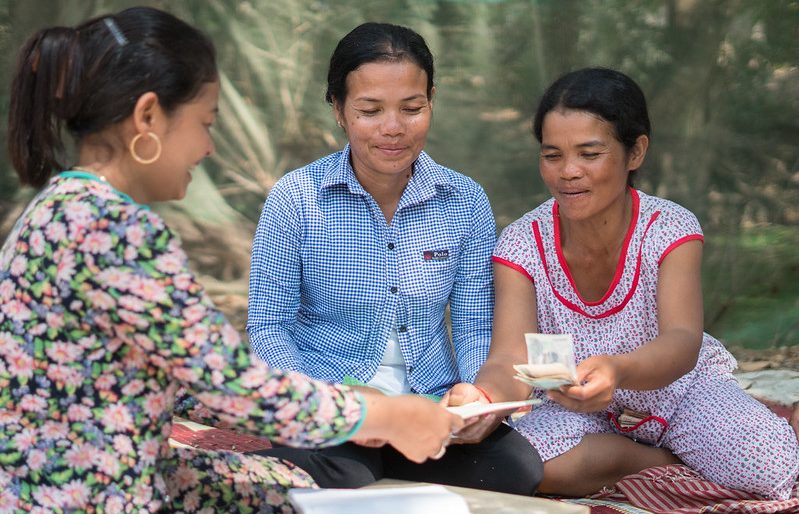#GenderCash: One year on from the Nairobi Gender Symposium

It’s been a year since the CALP Network’s #GenderCash Symposium in Nairobi, which brought together humanitarian actors working on gender and cash and voucher assistance (CVA), and formally launched our efforts to better integrate the two – a commitment enshrined in our Agenda for Collective Action. Our pledge was to ensure that CVA is designed and implemented with a gender perspective, to ‘do no harm’ and build on opportunities to address gender inequality.
International Women’s Day 2019 is an opportunity to reflect on the work to date in support of this aim, which has included the publication of nine research and practice papers as part of our ‘Collected Papers on Gender and Cash Transfer Programmes in Humanitarian Contexts’, and practitioner discussions in Bangkok, London, New York and Ottawa. But it is also a time to look ahead, to ask how we can build on this momentum to expand the conversation to other vulnerable and marginalized groups, and ensure we are turning talk into action.
Gender is a critical consideration – but alone it is not enough to achieve quality CVA
Last year, our partners documented how CVA paired with other assistance modalities in multi-year programmes can decrease intra-household tensions, boost women’s skills and confidence, and increase girls’ enrolment and attendance in primary school. Research also showed that when CVA is used as part of programming that directly engages men and boys, positive attitudinal shifts about gender roles and a more equity between men and women in childcare responsibilities can also be observed. However, the evidence also showed that cash can also increase the risk of GBV[1], create additional work for women and reinforce gender roles.
The key learning from this is that we need to design programmes based on context-specific gender analysis and community consultations, rather than using a one-size-fits-all gender approach, such as simply targeting women as recipients, and calling it a gender programme.
We have been overwhelmed by the positive response from our membership and beyond to our call to make CVA more gender responsive. CARE and UN Women, for example, are now leading the new Grand Bargain cash and gender sub-stream, developing guidance, and mobilizing stakeholders to action. Meanwhile the World Food Programme, who contributed two research papers to our collection, have continued to add to the evidence base by publishing the findings from a multi-country study into how CVA can promote gender equality. At a practice level, we have seen examples of actors reviewing their targeting and post-distribution monitoring tools to be more gender aware. And the linkages we have strengthened between cash and gender practitioners through this work will make it easier for actors to share expertise when designing future interventions.
Another major takeaway from the rich discussions in the past year is that gender is one of many characteristics that impact the way people experience a humanitarian crisis, and how they are able to access and use humanitarian assistance. To truly tackle underlying vulnerabilities and inequalities, we must consider age, disability and other context-specific characteristics (social, ethnic or linguistic minority groups). Gender is one part of the picture when it comes to ensuring we are delivering quality CVA.
This year we are renaming this area of the CALP Network’s work ‘Understanding Vulnerabilities and Capacities’, and shifting our focus to an intersectional analysis of age, gender and disability. Our discussions with stakeholders over the past year have shown that ‘gender’ alone can be seen as a limiting theme, with a tendency to focus only on women and girls. Meanwhile, the needs of older people and people with special needs are still often ignored, not to mention other vulnerable and marginalised groups.
This approach will enable us to widen our focus and champion a fuller understanding of how CVA can go beyond the notion of ‘do no harm’ towards addressing socio-economic inequalities. Last year, we created a space and convened actors to address questions around gender and CVA. This year, we will nurture that space, and expand it to discuss the use of CVA to meet the needs of older people and people with disabilities.
Ensuring we keep people’s experiences at the centre
We’ve also seen growing recognition in the last year of the need to put crisis-affected people’s experiences at the centre of any conversation about quality. Organisations like Ground Truth Solutions are mapping out user journeys and calling on humanitarian agencies to design programmes based on the diverse backgrounds, experiences and capacities of crisis-affected populations. These conversations are closely linked to those about the intersection of vulnerabilities. By listening to affected populations, and sharing evidence and expertise on how to design humanitarian responses that are sensitive to a range of vulnerabilities and capabilities, we hope to move this area of work to a more nuanced understanding of quality CVA.
We will be updating our thematic page with new resources and information as this area of work continues to evolve. http://www.cashlearning.org/thematic-area/gender-and-ctp
[1] According to Concern’s study in Malawi, “where a programme targets the wife as principal beneficiary for long-term and high-value cash and asset transfers, there is a potentially high risk of increased GBV, abandonment and other negative impacts on the household. This is because interventions that empower women to be economically independent are deeply threatening to traditional norms of masculinity in Malawi.”
Photo: Kimlong Meng – Oxfam Novib


